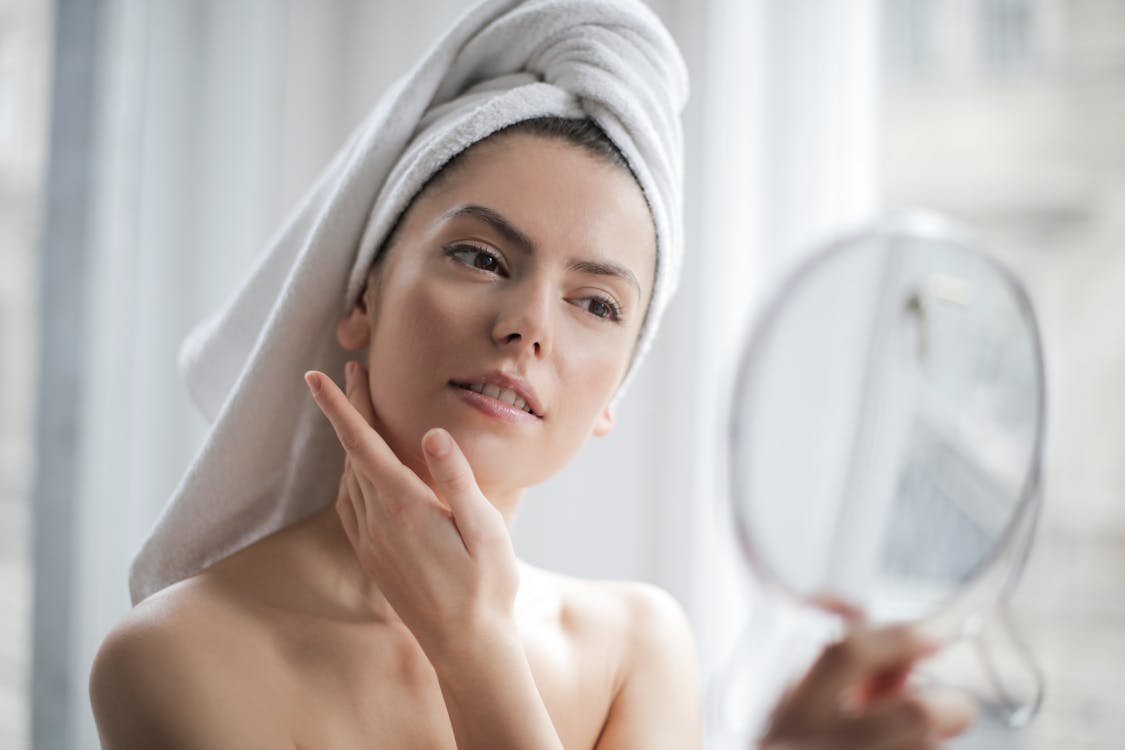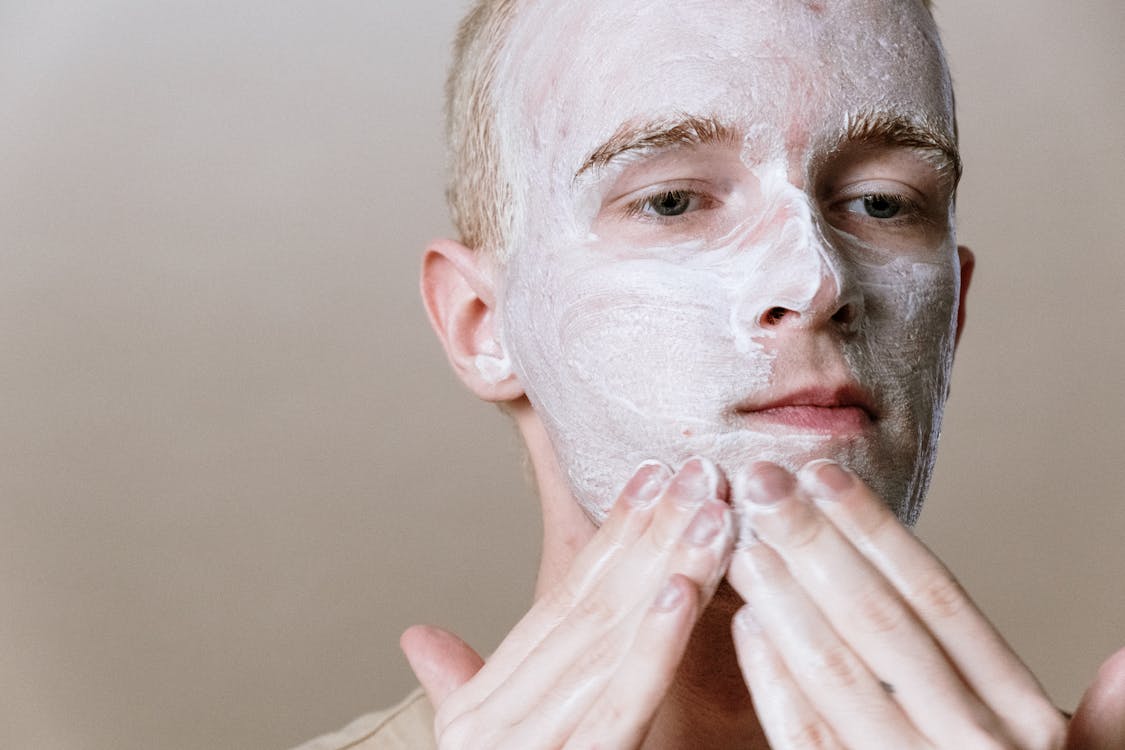If you’re struggling with stubborn rosacea, you’re not alone. Rosacea is one of the trickiest skin conditions to deal with because, unfortunately, there is no cure. People with rosacea have to focus on managing their symptoms, rather than curing an underlying issue.
Managing rosacea also comes with its own challenges. To successfully manage this inflammatory skin condition, you have to take a two-pronged approach: you need to soothe your inflamed skin and avoid the things that are triggering your rosacea in the first place.
There’s a lot to think about when you’re trying to build a skincare routine for rosacea-prone skin, but we’re here to make creating your perfect routine easier. Let’s go over the most frequently asked questions about rosacea.
Q: What’s the best skincare routine for rosacea?

When it comes to skincare for rosacea, less is more. You want your routine to be gentle and simple so you can soothe it and avoid irritating it as much as possible.
People with rosacea usually see the best results when they stick to a three-step skincare routine consisting of:
- A gentle cleanser
- A serum for hydration or facial redness
- A moisturizing sunscreen in the morning and a soothing moisturizer in the evening
Yes, this is all you need. If you’re having a particularly bad flare-up, you can also add in a soothing booster product, like a mask for hydration or redness. But, in general, you want to keep your skincare routine as simple as possible to avoid accidentally irritating your skin.
Q: Why do so many skincare products make my rosacea flare up?

When you have rosacea, you can’t necessarily use the same skincare products as other people. Sensitive, rosacea-prone skin can get intensely irritated by common skincare ingredients that are simply too harsh for people with rosacea. Rosacea can also pop up when you exfoliate your skin or sustain sun damage.
Keep in mind that the threshold for what makes something a “harsh ingredient” is lower when you have rosacea. For example, chemical exfoliants like glycolic acid and lactic acid can make the skin look radiant if you don’t have rosacea, but trigger terrible skin sensitivity and redness if you do have rosacea. Drying ingredients (such as alcohol, witch hazel, menthol, peppermint, tea tree oil, and camphor) can also be extremely triggering for rosacea-prone skin.
The threshold for physical exfoliation is also much lower for people with rosacea. Even things like washing the face with a washcloth, using makeup brushes with stiff bristles, or using a face wash with exfoliating “beads” can trigger a rosacea flare.
Q: Why is my rosacea worse in the winter or after I eat spicy foods?

Topical skincare products aren’t the only thing that can cause a rosacea flare. Foods and your environment can also cause your rosacea to act up. Some common rosacea triggers include spicy foods, hot beverages, cold and dry weather, and excess heat.
If you think a food or your environment is triggering a rosacea flare, do your best to avoid the trigger. If you can’t avoid it, use extra soothing and moisturizing products in your skincare routine. For example, if your skin is very irritated by cold and dry winter weather, switch to a heavier moisturizer during the winter.
Q: What skincare ingredients should I look for if I have rosacea?

Look for skincare ingredients that ease inflammation, fight free radical damage, strengthen your skin barrier, and deeply hydrate your skin. Some of our favorite ingredients for rosacea include:
- Anti-inflammatory ingredients
- Azulene
- Azelaic acid
- Aloe vera
- Antioxidants
- Vitamin C
- Alpha Arbutin
- Green tea extract
- Barrier-strengthening ingredients
- Ceramides
- Peptides
- Niacinamide
- Hydrating ingredients
- Hyaluronic acid
- Glycerin
- Squalene
STEP-BY-STEP ROSACEA SKINCARE
Now that we’ve answered your top rosacea FAQs, let’s talk specifics. Here’s an example of a three-step rosacea skincare routine that’s simple and soothing. You can follow this exact routine or use it as a starting point to build your own custom routine.
Step 1: Gentle Cleanser
For a hydrating and soothing cleanser, try the Hydrating Cleansing Milk. With calming ingredients like aloe vera, chamomile, and green tea extract, this cleanser is perfect for people with rosacea-prone skin.
Step 2: Soothing Serum
After cleansing your skin, apply a soothing serum like the Marine DNA Serum. This serum deeply hydrates and nourishes the skin with hyaluronic acid, vitamins, and COQ10. Its Marine DNA Extract also helps firm the skin and slow down premature signs of aging.
Step 3: Sun Protection (Morning) or Barrier Healing (Night)
In the morning, finish your skincare regimen with a moisturizing sunscreen. People with rosacea should use sunscreen daily to protect their skin from sun damage and irritation. Make sure to use a broad-spectrum sunscreen of at least SPF 30, like our hydrating 4-In-1 Sunscreen SPF 50.
In the evening, you want to focus on deeply hydrating your skin and promoting a healthy skin barrier. With hyaluronic acid and skin-healing vitamins, the Marine DNA Cream is an excellent choice for rosacea-prone skin.
As Needed

When you’re experiencing heightened skin sensitivity, redness, or dryness, pamper your skin with a soothing mask. We love the Azulene Masque for rosacea flare-ups. With calming chamomile extract and an array of moisturizing ingredients, this mask leaves dry skin feeling hydrated and refreshed.







